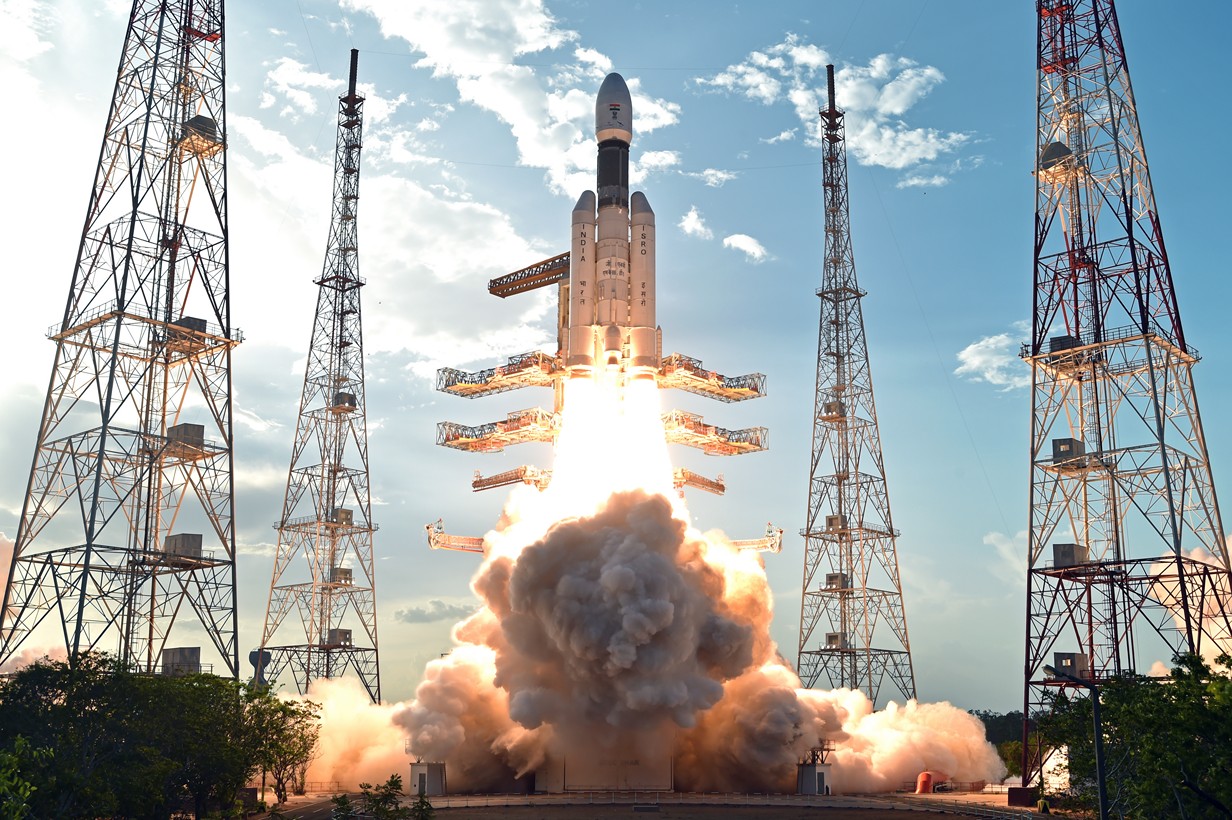SOURCE: SPACE NEWS

India’s launch plans for the coming year include a range of Earth observation, communication and navigation satellites according to an annual report. Progress in the areas of space transportation and human spaceflight is also laid out in the Indian Space Research Organisation (ISRO) report.
India is gearing up to launch 10 Earth observation satellites across the next financial year, starting April. These include optical, multi- and hyperspectral, and synthetic aperture radar satellites. India’s launch plans include three communication satellites and two navigation satellites are also planned for the coming year. India’s next launch is set for March 5. A Geosynchronous Satellite Launch Vehicle (GSLV) is set to launch the 2,100-kilogram GEO Imaging SATellite (GISAT-1). The Space Docking Experiment (SPADEX) is another mission planned for 2020. A chaser and target will demonstrate the technologies needed for docking two spacecraft. The project is designed as a forerunner to future planetary missions and crew transfer capabilities.
The proposed Indian space budget for 2020-21 is 13,480 Crore ($1.9 billion). ISRO published the annual report (pdf) for 2019-2020 earlier in February.
U.S. President Donald Trump praised India’s efforts in lunar exploration and human spaceflight during a state visit this week.
Trump and Indian Prime Minister Narendra Modi pledged to deepen defense and security cooperation, especially through greater maritime and space domain awareness, according to a White House briefing. The statement also notes discussions related to Earth observation, planetary exploration, heliophysics, human spaceflight, and commercial space cooperation.
Gaganyaan, reusable launcher
The ISRO report outlines recent progress in the areas of human spaceflight and space transportation.
Progress has been made on India’s announced Gaganyaan human spaceflight program, with the configuration of the Gaganyaan Crew Escape System having been finalized. It will utilize five solid motors using a newly developed high burn rate propellant system.
Gaganyaan has the objective of demonstrating human space flight capability in Low Earth orbit. It aims to send three crew members into orbit for 5-7 days and safely return them to Earth. The crew module will be a height of 3 meters and a 3.5-meter-diameter.
An uncrewed test mission on a GSLV MkIII launcher is slated for launch in December 2020 or early 2021. A second test flight is planned for July 2021.
In space transportation India is proceeding with a Reusable Launch Vehicle (RLV) project to demonstrate technologies for developing a wing body vehicle similar to that of an aircraft. A Landing Experiment to test autonomous landing at an airfield in Karnataka, southwest India following airdrop from a helicopter was stated to be planned for the last quarter of 2019. No update on its status or outcome was provided.
The status of the Hypersonic Air Breathing Vehicle with Air frame integrated system (HAVA) is also provided. The hypersonic vehicle uses scramjet engine power and may be used for the design and development of a Two-Stage-to-Orbit (TSTO) vehicle.
India’s light launch plans, commercialization
Two demo flights of the Small Satellite Launch Vehicle (SSLV) are also part of India’s launch plans. The 2-meter-diameter, 34-meter-tall launcher will be capable of lifting satellites between 10-500 kilograms to a 500-kilometer orbit. Microsat-2A will demonstrate launch on demand capability with SSLV. The 142-kilogram satellite will operate for 10 months in a 350-kilometer orbit.
NewSpace India Limited, a newly formed commercial arm of the Indian space agency, is tasked with enabling Indian industry to scale up high-technology manufacturing and production base for Indian space efforts. It will be involved in the manufacture of SSLV in collaboration with the private sector. Another major activity will be the productionisation of Polar Satellite Launch Vehicle (PSLV) through Indian industry.
No update on the proposed Chandrayaan-3 lunar landing mission appeared in the report. Chandrayaan-2 launched last year placed an orbiter into a 100 x 100-kilometer lunar orbit, but the Vikram lander failed to land safely.
from Indian Defence Research Wing https://ift.tt/2VxMnwl
via IFTTThttp://idrw.org
No comments:
Post a Comment